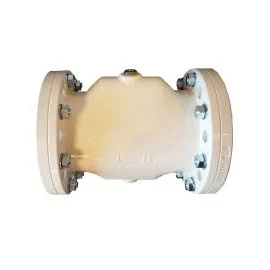In various industrial sectors, effective fluid control is essential for smooth operations. Pinch valves, thanks to their unique design and reliable functionality, have become a staple in handling different types of fluids. This article delves into the operation, design, benefits, and applications of pinch valves, offering a detailed look at why they are a preferred choice for many industries.
How Pinch Valves Work
It utilizes a simple yet efficient mechanism: by compressing a rubber sleeve to block fluid flow. When the actuator, which can be pneumatic, hydraulic, manual, or electric, operates, it squeezes the rubber sleeve, completely sealing the valve and stopping the flow. Once the actuator releases, the sleeve returns to its original form, allowing fluid to pass freely. This mechanism offers a straightforward and highly effective solution without complex mechanical parts, reducing the risk of malfunction and enhancing reliability.
Key Components of Pinch Valves
These fluid control devices consist of several essential components that work in harmony to provide optimal performance:
- Valve Body: The outer casing of the valve, typically made of durable materials like stainless steel or cast iron, provides support and protects internal components from external factors. The material choice depends on the environment and medium the valve is designed to handle.
- Rubber Sleeve: The rubber sleeve is the critical part that comes into direct contact with the fluid. Designed to be chemically resistant and durable, the sleeve is usually layered for enhanced strength, elasticity, and resistance to wear. Its design ensures an excellent seal and effective fluid handling.
- Actuator: The actuator is responsible for controlling the valve’s operation. Depending on the specific needs of the system, the actuator can be pneumatic, electric, manual, or hydraulic, providing flexibility in control and automation.
- Stem and Gate: These components transmit the force from the actuator to compress or release the rubber sleeve. They are designed to distribute force evenly, ensuring consistent performance.
Benefits of Pinch Valves
The valves stand out for their numerous advantages, including:
- Contamination-Free Control: Since the fluid only touches the rubber sleeve, these devices are ideal for applications where preventing contamination is crucial, such as in the pharmaceutical, food and beverage, and water treatment industries.
- Corrosion and Abrasion Resistance: Pinch valves excel in handling corrosive chemicals and abrasive fluids like slurries, ensuring long-lasting performance and minimizing maintenance costs.
- Clog-Free Operation: The design of these valves ensures that they can handle fluids containing large particles or viscous substances without clogging, making them perfect for industries dealing with such materials.
- Easy Maintenance: The valve’s simple design allows for quick and cost-effective maintenance. When the rubber sleeve wears out, it can be replaced easily, reducing system downtime.
- Quick Response Time: These valves offer fast response times, especially with pneumatic actuators, making them suitable for processes requiring rapid and precise fluid control.
Common Applications of Pinch Valves
They are widely used across several industries due to their versatility and performance:
- Water and Wastewater Treatment: In systems for sludge transport, chemical dosing, and sewage pump stations, pinch valves offer precise control and prevent blockages.
- Power Plants: Pinch valves are used to regulate the flow of materials such as coal and flue gas, ensuring smooth operation in the plant’s processing units.
- Mining: Pinch valves efficiently handle abrasive materials like mineral slurries and tailings, making them indispensable in the mining industry.
- Chemical Industry: Pinch valves are used for accurate chemical dosing and managing fluids in reactors, contributing to safe and effective chemical production.
- Pulp and Paper: In pulp transport systems, pinch valves help prevent clogging and ensure smooth operations.
Selecting the Right Pinch Valve
Choosing the correct valve depends on several factors:
- Pipe Material and Flexibility: The pipe material must match the valve’s design and ensure effective sealing without deformation, especially in high-pressure applications.
- Control Method: Select between on/off control for simple flow regulation or proportional control for precise flow adjustments, based on the needs of your system.
- Actuation Method: Consider whether a pneumatic, electric, manual, or hydraulic actuator is most suitable for your application, taking into account the available power sources and control requirements.
Why Pinch Valves Stand Out
These fluid control devices are an ideal solution for handling abrasive, corrosive, and particle-laden fluids. Their simplicity, combined with their ability to operate in demanding environments, makes them a go-to option for industries such as mining, chemical processing, water treatment, and food production.
Conclusion
Pinch valves are essential components in fluid control systems, offering benefits such as contamination-free operation, corrosion resistance, easy maintenance, and fast response times. Whether used in wastewater treatment, power generation, or mining, their efficiency and reliability make them a top choice for industrial applications.
When selecting this type of valve, consider factors like pipe material, control method, and actuation type. Regular maintenance ensures consistent performance over time.
Looking to purchase in bulk? Besqo Marine provides high-quality wholesale valves to meet the demands of your industrial operations. As a trusted supplier, we offer customized solutions to suit your specific needs, whether for B2B transactions or large-scale applications. Contact us today for premium products that enhance your fluid control systems.
